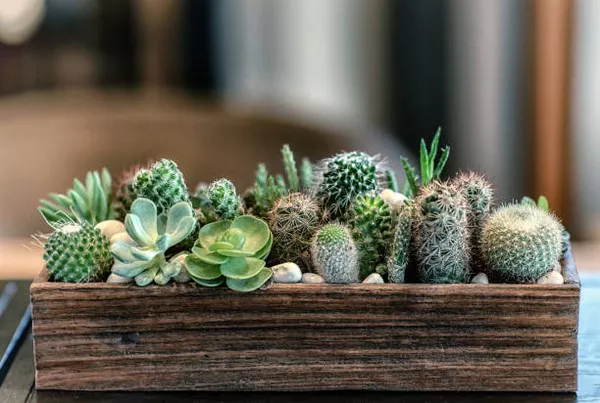Split Rock succulents, scientifically known as Pleiospilos nelii, are distinctive and fascinating plants that captivate succulent enthusiasts with their rock-like appearance and striking patterns. Native to South Africa, these unique succulents are well-suited for arid environments and are relatively easy to grow with the right care. In this comprehensive guide, we will delve into the intricacies of growing split rock succulents, covering everything from choosing the right specimens to providing optimal care for their thriving existence.
Understanding Split Rock Succulents
Split Rock succulents derive their name from their unique appearance, resembling small, split stones or pebbles. These intriguing plants belong to the Aizoaceae family and are characterized by two thick, fleshy leaves that split down the middle, forming a cleft in the center. Their compact size and low growth make them ideal for container gardening or rock gardens, adding a touch of the exotic to any succulent collection.
Choosing the Right Split Rock Varieties
When embarking on the journey of growing split rock succulents, it’s essential to select healthy specimens. Pleiospilos nelii comes in various color variations and patterns, ranging from shades of green to reddish-brown, often with intricate markings on the leaves. Choose plants with firm, plump leaves and vibrant colors, avoiding any signs of discoloration or damage. Additionally, consider the size of the plants, as split rocks remain relatively small, making them suitable for both indoor and outdoor cultivation.
Optimal Soil Conditions
Creating the right soil mix is crucial for the success of split rock succulents. These plants prefer a well-draining mix that mimics their natural habitat. A combination of succulent or cactus mix and perlite or coarse sand provides the ideal conditions for preventing waterlogged roots and potential rot. Avoid using regular potting soil, as it tends to retain too much moisture.
See Also: How to replant overgrown succulents?
Watering Techniques for Split Rock Succulents
Split rock succulents are adapted to arid conditions and have unique watering requirements. Unlike many succulents, they undergo a distinct growth cycle, with active growth in the fall and spring and dormancy during the hot summer months. During the growing season, water the plants sparingly, allowing the soil to dry out completely between waterings. Reduce watering significantly during the dormant period to prevent overhydration and potential root rot.
Sunlight Requirements
As native inhabitants of South Africa, split rock succulents thrive in full sunlight. Provide these plants with at least 6 hours of direct sunlight per day, ensuring they receive the intense light they require for healthy growth. In regions with scorching temperatures, consider providing partial shade during the hottest part of the day to prevent heat stress. Adjust the placement of your split rock succulents to optimize their exposure to sunlight.
Temperature Considerations
Split rock succulents are well-adapted to warm temperatures and can tolerate mild frost. However, it’s crucial to protect them from extreme cold, especially during the winter months. In colder climates, consider bringing them indoors or providing frost protection when temperatures drop below their tolerance level. Maintaining a temperature range of 50°F to 80°F (10°C to 27°C) is optimal for these unique succulents.
Container Gardening Tips
Due to their small size and unique appearance, split rock succulents are well-suited for container gardening. Choose shallow containers with adequate drainage holes to prevent water accumulation. Container gardening allows for greater control over soil conditions and makes it easier to move the plants to different locations, ensuring they receive the right amount of sunlight and protection from harsh weather conditions.
Fertilizing Split Rock Succulents
Split rock succulents do not require frequent fertilization, and overfeeding can be detrimental to their health. During the growing season, apply a balanced, diluted succulent fertilizer every 4 to 6 weeks. However, avoid fertilizing during the dormant period, as the plants are not actively growing and do not need additional nutrients. Always follow the recommended dosage on the fertilizer package to prevent overfeeding.
Propagation Techniques
Expand your split rock succulent collection by mastering the art of propagation. These succulents can be propagated from seeds or by division. Collect seeds from mature plants and sow them in a well-draining seed mix. Alternatively, carefully divide offsets that naturally form around the base of the plant. Ensure that both seeds and offsets are placed in a warm, bright location to encourage successful germination and rooting.
Common Pests and Diseases
While split rock succulents are relatively resilient, they can still face challenges such as pests and diseases. Keep a vigilant eye for common succulent pests like mealybugs, aphids, and spider mites. Address any infestations promptly using natural remedies or insecticidal soap. Additionally, ensure proper airflow to prevent fungal issues, as these succulents are susceptible to rot if exposed to excess moisture.
Seasonal Care Tips
Adapting your care routine to the changing seasons is essential for the well-being of split rock succulents. During the active growth periods in fall and spring, provide slightly more water and fertilize as needed. As winter approaches, gradually reduce watering and withhold fertilization to coincide with their natural dormancy. Protect the plants from extreme cold, and consider bringing them indoors if necessary.
Conclusion
Successfully growing split rock succulents is a rewarding experience that allows both beginners and experienced gardeners to appreciate the uniqueness of these captivating plants. By understanding their specific requirements, from soil and watering to sunlight and temperature, you can create an environment that promotes the health and vibrancy of your split rock succulent collection. Remember to observe and adjust your care routine based on the individual needs of each plant, and soon you’ll be rewarded with a stunning array of these fascinating, stone-like succulents.


